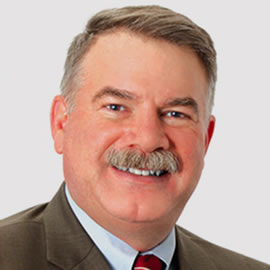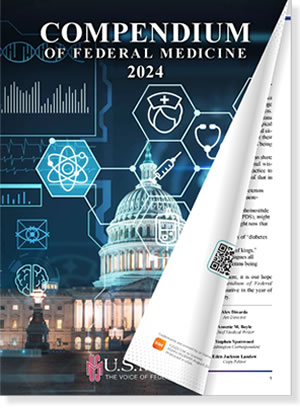‘To Care for Him Who Shall Have Borne the Battle and for His Widow, and His Orphan.’ — President Abraham Lincoln (1809-1865)

Editor-In-Chief, Chester “Trip” Buckenmaier III, MD, COL (ret.), MC, USA
During my many career visits to the U.S. Department of Veterans Affairs (VA) building on 810 Vermont Ave. NW, Washington, DC, I have been greeted in the main lobby by Lincoln’s mission statement for the VA. Few governmental agency taskings have been stated more eloquently and succinctly. It would take another 65 years before the modern VA was created, on July 21, 1930, when Hoover signed Executive Order 5398. Lincoln’s call for the American people to pay their debt to those who defend the Constitution remains a primary responsibility of our democracy.
The VA has been forged and tempered from some of the most challenging periods in our history. Following the trauma of the Civil War, Lincoln signed a law leading to the establishment of the National Home for Disabled Volunteer Soldiers in 1873, which would expand to 11 institutions throughout the country to care for war veterans. The need for these veterans’ hospitals expanded following World War I, as wounded flooded back from European battlefields. Following Hoover’s executive order creating the modern VA, the demand for the system was accelerated by the prosecution of World War II. Sadly, the duty to care for and support defenders of freedom has not eased through the turbulent end of the 20th century and the beginning of the 21st. Today, the VA healthcare system has 1,600 facilities, including 144 VA medical centers and 1,232 outpatient-care sites. This system and the country’s covenant with its veterans have no peer. The VA Administration is clearly one of the most essential and defining institutions that form the foundation upon which our democracy has been built.
Like any construct of man, notwithstanding the clarity of purpose established in its mission statement, the VA system has faced challenges and experienced failures throughout its existence. Gaffney et al.1 from Harvard Medical School, in their report “Lack of Care for those Who Serve: Healthcare Coverage and Access among US Veterans,” 2019, examined veterans’ insurance coverage in a cohort of 53,230 veterans, representing 25.7 million individuals nationwide. They determined that 1.53 million veterans were uninsured, and about 1 in 12 (2 million) would go without care because of cost. They concluded that “the goal of universal coverage for veterans is unachieved.” Lack of adequate medical coverage is not only a veteran problem, but plagues millions of Americans. Additionally, the VA has been criticized for slowly responding to modern war illnesses like Agent Orange in Vietnam, Gulf War Syndrome, and most recently Burn Pit Exposure.
In my career, I was tasked by Lt. Gen. Eric Schoomaker, (42nd US army surgeon general and commanding general) to lead in an effort to delve into pain management issues impacting many wounded servicemembers returning from Iraq and Afghanistan. Blessedly, we had the good fortune to partner Department of Defense (DoD) efforts in this area with the VA. Through this initiative, I was introduced to Dr. Rollin Gallagher, who served as the VA national program director for pain management, and Rosemary Polomano, a professor at the University of Pennsylvania School of Nursing. This partnership allowed the DoD to leverage the VA’s many nationwide academic partnerships between schools of medicine, nursing and dentistry. VA medical centers establish training opportunities, research collaborations and clinical services to advance veteran health through these relationships. I am pleased to confirm that pain care for servicemembers has improved tremendously, both on the battlefield and at home, and that much of this success is attributable to this VA collaboration.
More recently, I have been involved again with the VA healthcare system due to my own burn pit exposure issues. I have been visiting the VAMC in Baltimore for a series of appointments related to my pulmonary issues. I was shocked when I overheard a disgruntled VA patient express disdain for the facility while waiting for medications at the pharmacy. Maybe my decades working within DoD, VA and civilian hospitals have “institutionalized” me, but I have been nothing but impressed with the clinicians, support staff and care I have received. Not to mention, I am constantly recognized and thanked for my service. I can state without equivocation that the VA system is certainly one of the finest in the nation and perhaps the world.
Moreover, because of the unique nature of my health issues related to deployment service, I had already discovered there was little help for me in civilian medicine. Unfortunately, I have found that most non-federal providers need to learn more about burn pit exposure issues or the PACT (Sergeant First Class Heath Robinson Honoring our Promise to Address Comprehensive Toxics) Act legislation. The VA is a vital component of our nation’s defense.
As this turbulent year draws to a close and Americans seem increasingly divided over many domestic and global issues, it seems prudent to be reminded of the many positive elements of being an American citizen. We are blessed with the world’s most sophisticated and powerful military, and those who serve are protected by the most preeminent veteran healthcare system ever created. I take considerable pride in my service to the DoD and collaborative efforts with the VA.
Today, I feel tremendously blessed that I have access to the VA to manage my health issues. While I might not agree on every topic with every other American, most Americans agree we have a duty to care for those who defend us. The VA is one of the institutions that binds our country and reminds us of who we are and what we value. During this holiday season, please join me in thanking the dedicated men and women who labor in America’s impressive system for veteran care, the U.S. Department of Veterans Affairs.


